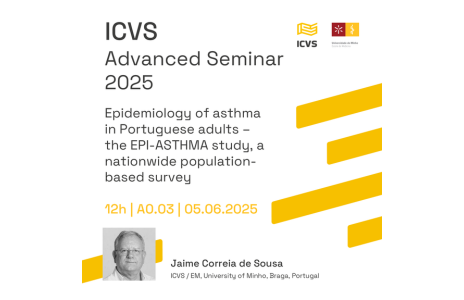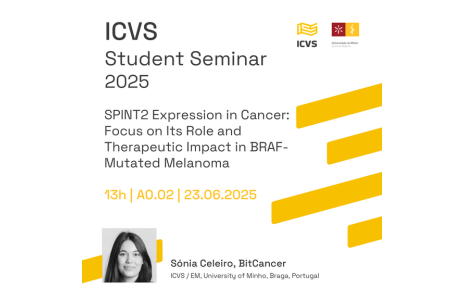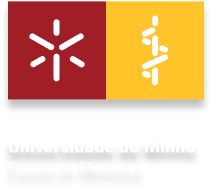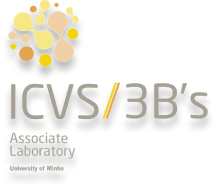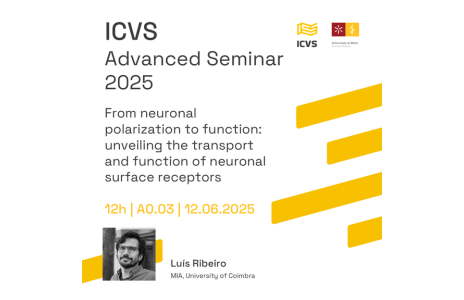
ICVS Advanced Seminar “From neuronal polarization to function: unveiling the transport and function of neuronal surface receptors”
ICVS Advanced Seminars, a weekly series aimed at fostering discussion on cutting-edge research, take place every Thursday at EM. “From neuronal polarization to function: unveiling the transport and function of neuronal surface receptors” Luís Ribeiro, MIA, University of Coimbra


